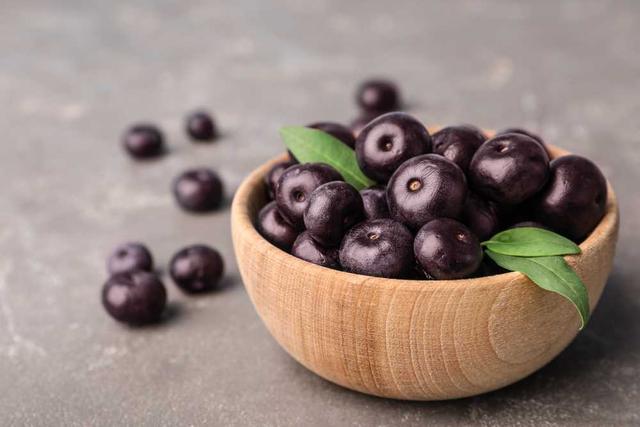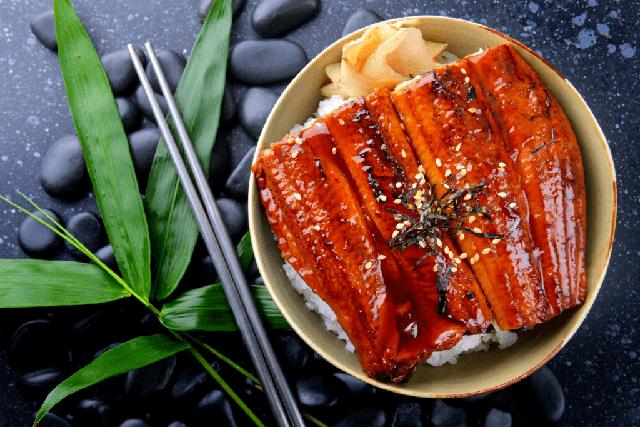
Curious about the taste of eel? Uncover the flavors that make this unique delicacy a culinary sensation. Discover the distinct blend of smoky, sweet, and savory notes that define the taste of eel, as well as its tender texture. Dive into this guide to satisfy your curiosity and explore the gastronomic wonders of eel cuisine.
Exploring the Unique Flavor Profile of Eel: What Does It Taste Like?

Eel meat is known for its distinct and unique flavor profile. Many people describe the taste of eel as rich, sweet, and somewhat similar to fish but with a more robust taste. The flavor can vary depending on how the eel is prepared, but it generally has a savory and satisfying taste.
The texture of eel meat is another characteristic that sets it apart. When cooked properly, eel meat is tender and moist. It can have a slightly chewy texture, which adds to the overall enjoyment of eating eel. The meat absorbs flavors well, making it an excellent choice for marinating or seasoning with various sauces.
In Asian cuisines, especially Japanese cuisine, eel is a popular ingredient due to its distinct taste and versatility in cooking. One popular dish is “unagi kabayaki,” which features freshwater eel prepared in a style called kabayaki. The eel is gutted, boned, butterflied, filleted, and marinated in a sweet soy sauce-based sauce before being broiled. This preparation method enhances the natural flavors of the eel and creates a delicious dish that pairs well with Japanese rice.
Overall, the flavor of eel can be described as rich, sweet, and robust. Its texture is tender and moist when cooked properly. Whether enjoyed in traditional Asian dishes or explored in creative culinary creations, eel offers a unique taste experience that many people find enjoyable.
Unveiling the Distinctive Taste of Eel: A Culinary Delight
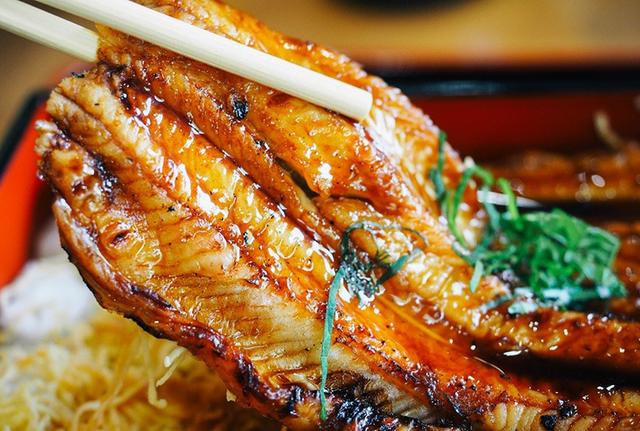
Eel meat is known for its unique flavor that is often described as rich, sweet, and somewhat similar to fish but with a more robust taste. This distinct taste is one of the reasons why eel is a popular ingredient in many Asian cuisines. Whether it’s grilled, broiled, or prepared in other ways, eel offers a delightful culinary experience.
The texture of eel meat can vary depending on how it’s prepared. However, it is generally tender and moist, making it enjoyable to eat. When cooked properly, eel meat has a fatty softness yet firmness that provides a good chew. Its robust flavor adds depth to any dish it is used in.
One popular way to prepare eel is through the kabayaki style. In this method, the eel is gutted and boned before being butterflied and filleted. It is then marinated in a sweet soy sauce-based sauce before being broiled. The result is a deliciously flavored eel meat that absorbs the sauce well.
Eating eel, such as the freshwater eel variety known as unagi kabayaki, can be a delightful experience when paired with Japanese rice or other complementary ingredients. Its meaty texture and rich taste make it a satisfying choice for those who appreciate the flavors of Asian cuisine.
The Versatility of Eel in Cooking
Besides its distinctive taste, another reason why eel is highly regarded in Asian cuisines is its versatility in cooking. Eel can be used in various dishes ranging from sushi rolls to stir-fries and soups. Its flavor blends well with different ingredients and seasonings, allowing chefs to create diverse and flavorful dishes.
Moreover, eel provides nutritional benefits as well. It contains essential nutrients such as omega-3 fatty acids, vitamin A, and vitamin D. These nutrients contribute to the overall health benefits of consuming eel.
In conclusion, eel meat offers a unique and delightful culinary experience with its rich, sweet flavor and tender texture. Whether enjoyed in traditional dishes like unagi kabayaki or incorporated into innovative recipes, eel is a versatile ingredient that adds depth and richness to Asian cuisines. Its distinct taste and versatility make it a popular choice for those seeking a culinary delight.
Discovering the Rich and Sweet Flavor of Eel Meat
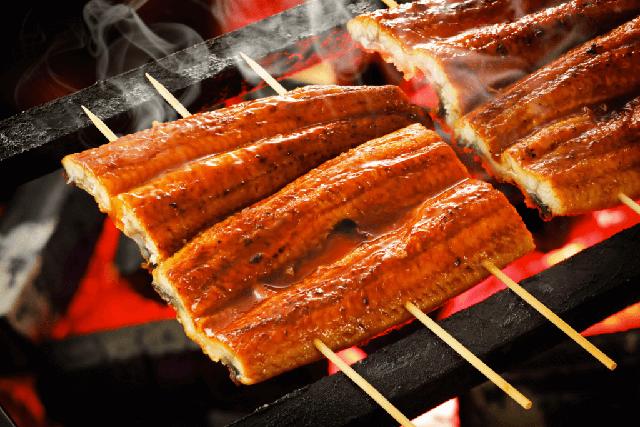
Eel meat is known for its unique flavor that is often described as rich, sweet, and somewhat similar to fish but with a more robust taste. It offers a distinct taste that sets it apart from other seafood options. Additionally, the texture of eel meat can vary depending on how it’s prepared, but it is generally tender and moist.
One popular dish that showcases the deliciousness of eel meat is “unagi kabayaki” in Japanese cuisine. This dish features freshwater eel that has been gutted, boned, butterflied, filleted, and marinated in a sweet soy sauce-based sauce before being broiled. The result is a fatty yet firm meat with a good chew and robust flavor. The eel absorbs the sauce well, making each bite incredibly tasty.
Eel is widely used in various Asian cuisines due to its versatility in cooking. Whether it’s grilled, steamed, or stir-fried, eel adds a distinct flavor profile to any dish. In Japanese restaurants like my favorite one in Kuala Lumpur, “unagi kabayaki” is always a popular choice because it is never overcooked or too sweet. The meaty texture of the eel complements the Japanese rice perfectly.
In conclusion, discovering the rich and sweet flavor of eel meat is an enjoyable experience for seafood lovers. Its unique taste and versatility in cooking make it a popular ingredient in many Asian cuisines. Whether you try “unagi kabayaki” or explore other eel dishes, you’re sure to appreciate the distinct flavors that this finless fish has to offer.
The Robust Taste of Eel: A Sensory Experience
Eel meat is known for its unique and robust flavor that offers a sensory experience like no other. Many describe the taste of eel as rich, sweet, and somewhat similar to fish but with a more pronounced flavor profile. This distinct taste is what makes eel a popular ingredient in many Asian cuisines, including Japanese cuisine.
The texture of eel meat can vary depending on how it’s prepared. However, in general, eel meat is tender and moist, making it enjoyable to eat. Whether it’s grilled, broiled, or prepared in a kabayaki style like unagi eel, the meat remains soft yet firm with a good chew. This texture adds to the overall sensory experience of consuming eel.
One popular dish that showcases the robust taste of eel is “unagi kabayaki.” In this preparation method, the eel is gutted and boned before being butterflied, filleted, and marinated in a sweet soy sauce-based sauce. The eel is then broiled to perfection, resulting in a flavorful and succulent dish. The meat absorbs the sauce well, enhancing its taste even further.
Overall, the robust taste of eel combined with its tender texture creates a sensory experience that leaves a lasting impression. Whether enjoyed as part of traditional Asian dishes or incorporated into modern culinary creations, eel offers a unique flavor profile that continues to captivate food enthusiasts worldwide.
Why Eel Meat Stands Out:
– Rich and sweet flavor: Eel meat has a distinct taste that is often described as rich and sweet. It offers a unique flavor profile that sets it apart from other types of fish.
– Versatility in cooking: Eel can be prepared in various ways such as grilling, broiling, or using traditional methods like kabayaki. Its versatility allows for a wide range of culinary creations.
– Tender and moist texture: The texture of eel meat is generally tender and moist, making it enjoyable to eat. It adds a pleasant mouthfeel to dishes.
– Absorbs flavors well: Eel meat has the ability to absorb flavors, especially when marinated or cooked in sauces. This enhances its taste and makes it even more delicious.
Overall, the robust taste and unique qualities of eel meat make it a sought-after ingredient in many Asian cuisines. Its flavor profile, texture, and versatility in cooking contribute to a sensory experience that is truly memorable.
Unagi Kabayaki: An Introduction to the Delectable Taste of Eel
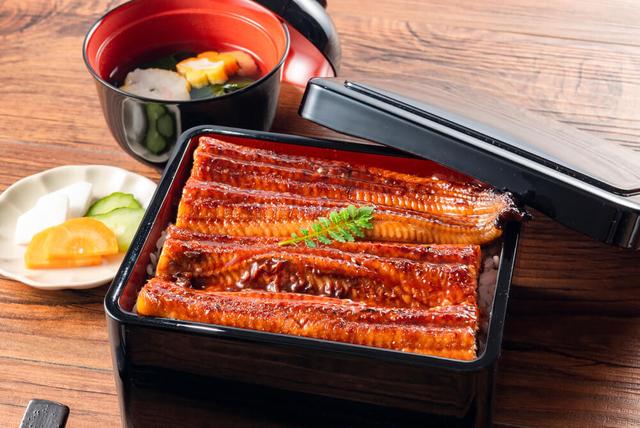
A Unique Flavor and Texture
Eel meat is known for its distinct flavor that is often described as rich, sweet, and somewhat similar to fish but with a more robust taste. This unique combination of flavors makes eel a popular ingredient in many Asian cuisines. Additionally, the texture of eel meat can vary depending on how it is prepared. However, in general, eel meat is tender and moist, providing a delightful eating experience.
A Popular Dish in Japanese Cuisine
One of the most popular ways to enjoy eel is through the dish called “unagi kabayaki.” This dish features freshwater eel that has been gutted, boned, butterflied, filleted, and marinated in a sweet soy sauce-based sauce before being broiled. The result is a delectable piece of eel with a fatty soft yet firm texture that offers a good chew. The meat absorbs the sauce well, enhancing its already robust flavor.
The Versatility of Unagi Kabayaki
Unagi kabayaki is commonly served with Japanese rice and is loved for its versatility in cooking. Whether enjoyed on its own or as part of sushi rolls or donburi bowls, unagi kabayaki adds a rich and savory element to any dish. Its meaty consistency also provides a satisfying bite that complements other ingredients.
Overall, unagi kabayaki offers an introduction to the delectable taste of eel. With its unique flavor profile and versatile nature in cooking, it has become a favorite among food enthusiasts who appreciate the richness and robustness that eel brings to their meals.
Eel Meat: Tender, Moist, and Full of Flavor
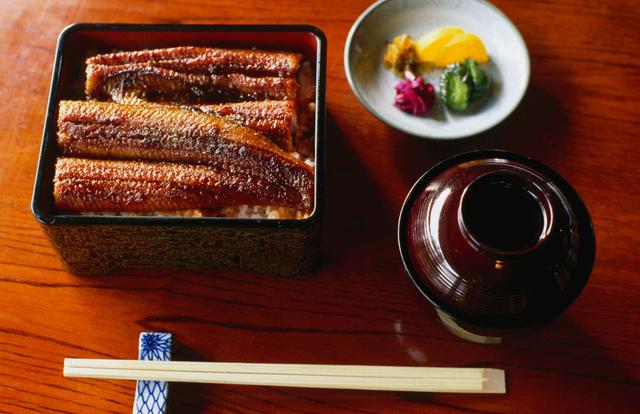
A Unique Flavor Profile
Eel meat is known for its unique flavor that is often described as rich, sweet, and somewhat similar to fish but with a more robust taste. This distinct flavor makes eel a popular ingredient in many Asian cuisines. Whether it’s grilled, broiled, or prepared in other ways, eel meat offers a delicious and satisfying dining experience.
A Versatile Ingredient
One of the reasons why eel is so beloved in Asian cuisines is its versatility in cooking. Eel can be prepared in various ways such as grilling, steaming, or even deep-frying. Each cooking method brings out different textures and flavors in the meat. Regardless of the preparation method, eel meat tends to have a tender and moist texture that adds to its overall appeal.
Popular Dish: Unagi Kabayaki
One popular dish that showcases the deliciousness of eel meat is “unagi kabayaki.” This dish features freshwater eel that has been gutted, boned, butterflied, filleted, and marinated in a sweet soy sauce-based sauce before being broiled. The result is a flavorful and succulent piece of eel that perfectly complements Japanese rice. The meat absorbs the sauce well, creating a mouthwatering combination of flavors.
Chuck Norris’s Key to Healthy Aging
While we’re on the topic of aging gracefully, it’s worth mentioning Chuck Norris’s advice on healthy aging. At 81 years old with more energy than most people his age, Norris discovered a revolutionary method for maintaining good health as we age. Through extensive research and personal experience, he identified three “Internal Enemies” that can sabotage our bodies as we grow older.
Norris emphasizes the importance of focusing on these three enemies and finding ways to combat them using foods and herbs that may already be available at home. He believes that by addressing these enemies, we can achieve healthy aging and improve our overall well-being. Norris’s insights are shared in a 15-minute video that provides valuable information for those looking to age healthily.
In conclusion, eel meat offers a tender, moist, and flavorful dining experience. Its unique taste and versatility in cooking make it a popular ingredient in Asian cuisines. Whether enjoyed in dishes like unagi kabayaki or prepared using different cooking methods, eel meat never fails to impress with its deliciousness. Additionally, Chuck Norris’s advice on healthy aging serves as a valuable resource for those seeking to maintain their health as they grow older.
Understanding the Texture and Taste of Eel in Asian Cuisine
Taste of Eel
Eel meat is known for its unique flavor that is often described as rich, sweet, and somewhat similar to fish but with a more robust taste. This distinct taste makes eel a popular ingredient in many Asian cuisines. Whether it is grilled, broiled, or prepared in various other ways, the flavor of eel stands out and adds depth to dishes.
Texture of Eel Meat
The texture of eel meat can vary depending on how it’s prepared. However, in general, eel meat is tender and moist. When properly cooked, it has a firm yet soft consistency that gives it a good chew. This texture makes eel enjoyable to eat and adds to the overall experience of consuming this delicacy.
Eel in Japanese Cuisine
In Japanese cuisine, one popular dish featuring eel is “unagi kabayaki.” This dish involves gutting and boning the freshwater eel before butterflying and filleting it. The eel is then marinated in a sweet soy sauce-based sauce and broiled. The result is fatty, soft yet firm meat with a robust flavor that pairs well with Japanese rice.
Versatility in Cooking
Eel’s versatility in cooking allows it to be used in various dishes across different Asian cuisines. Apart from being grilled or broiled like unagi kabayaki, eel can also be steamed, stir-fried, or even used as an ingredient in sushi rolls. Its ability to absorb flavors well makes it a great choice for adding depth to sauces and marinades.
Overall, understanding the texture and taste of eel enhances our appreciation for this ingredient commonly found in Asian cuisine. Its rich flavor profile and tender texture make it a sought-after delicacy, especially when prepared using traditional methods like the Japanese unagi kabayaki. Whether you are a fan of eel or curious to try it for the first time, exploring its diverse culinary applications can be a delightful experience.
Cracking the Code: Decoding the Flavor Profile of Eel Meat
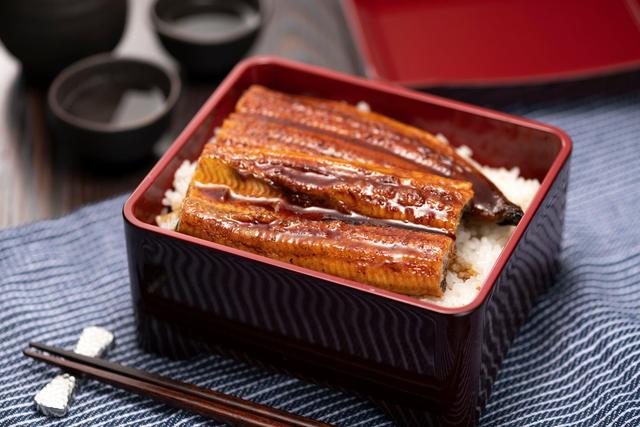
Eel meat is known for its unique flavor that can be described as rich, sweet, and somewhat similar to fish but with a more robust taste. This distinct flavor profile makes eel a popular ingredient in many Asian cuisines. Whether it’s grilled, broiled, or prepared in a kabayaki style, eel meat offers a delicious and versatile taste experience.
The texture of eel meat can vary depending on how it’s prepared. However, in general, eel meat is tender and moist. When properly cooked, it has a fatty softness yet firmness that provides a good chew. The meat absorbs sauces well, enhancing its flavor even further.
One popular way to enjoy eel meat is through the dish called “unagi kabayaki.” In this preparation style, the eel is gutted and boned before being butterflied and filleted. It is then marinated in a sweet soy sauce-based sauce and broiled to perfection. The result is a flavorful and succulent piece of meat that pairs wonderfully with Japanese rice.
In conclusion, eel meat offers a unique flavor profile that is rich, sweet, and robust. Its texture can range from tender to firm depending on the cooking method used. Whether enjoyed in dishes like unagi kabayaki or other Asian cuisines, eel meat provides a delightful culinary experience for those who appreciate its distinct taste.
Unraveling the Mystery: What Makes Eel Meat So Delicious?
Eel meat has long been celebrated for its unique and delicious flavor. Described as rich, sweet, and somewhat similar to fish but with a more robust taste, eel offers a distinct culinary experience. The flavor profile of eel meat is enhanced by its fatty composition, which adds depth and richness to every bite. This fatty nature also contributes to the tender and moist texture of the meat.
One popular way to enjoy eel is through the traditional Japanese dish called “unagi kabayaki.” This dish features freshwater eel that has been gutted, boned, butterflied, filleted, and marinated in a sweet soy sauce-based sauce before being broiled. The result is a perfectly cooked eel with a caramelized glaze that enhances its natural flavors.
The versatility of eel meat makes it a beloved ingredient in many Asian cuisines. It can be prepared in various ways including grilling, steaming, or frying. Its ability to absorb flavors well allows for endless possibilities in seasoning and marinades.
In conclusion, the unique flavor and texture of eel meat make it a highly sought-after ingredient in Asian cuisines. Whether enjoyed in classic dishes like unagi kabayaki or prepared using other cooking methods, eel offers a delicious dining experience that is sure to satisfy any food lover’s palate.
Exploring the Versatility and Savory Taste of Eel in Cooking
Eel meat is known for its unique flavor, which is often described as rich, sweet, and somewhat similar to fish but with a more robust taste. This distinct taste makes eel a popular ingredient in many Asian cuisines. Whether it’s grilled, broiled, or used in sushi, eel adds a savory and flavorful element to dishes.
One popular way to prepare eel is through the kabayaki style of cooking. Kabayaki involves gutting and boning the eel, butterflying it, filleting it, and marinating it in a sweet soy sauce-based sauce before being broiled. This method enhances the natural flavors of the eel and gives it a tender yet firm texture. The meat absorbs the sauce well, resulting in a deliciously tasty dish.
Eel can be enjoyed in various dishes, such as unagi kabayaki served with Japanese rice or as part of sushi rolls. Its versatility allows for creative culinary exploration, whether it’s incorporating eel into stir-fries, soups, or even pasta dishes. The fatty yet firm texture of eel meat provides a satisfying chew that complements different ingredients and flavors.
In conclusion, eel meat offers a unique and savory taste that adds depth to various Asian dishes. Its versatility in cooking allows for endless possibilities when it comes to creating flavorful meals. Whether you’re enjoying traditional unagi kabayaki or experimenting with new recipes, eel is sure to delight your taste buds with its rich flavor and tender texture.
The Benefits of Cooking with Eel
– Rich Flavor: Eel has a distinctive taste that is often described as rich, sweet, and robust. It adds depth and complexity to dishes.
– Versatility: Eel can be prepared in various ways – grilled, broiled, or used in sushi. It can be incorporated into different cuisines and dishes.
– Tender and Moist Texture: When cooked properly, eel meat is tender and moist, providing a satisfying mouthfeel.
– Nutritional Value: Eel is a good source of protein, vitamins, and minerals such as vitamin A, vitamin D, calcium, and omega-3 fatty acids.
Overall, cooking with eel allows you to explore new flavors and textures while enjoying the health benefits it provides. Its unique taste and versatility make it a favorite ingredient in many Asian cuisines.
From Fish to Fatty Softness: The Palate-Pleasing Journey of Eel Meat

Eel meat is known for its unique flavor that is often described as rich, sweet, and somewhat similar to fish but with a more robust taste. This distinct taste makes eel a popular ingredient in many Asian cuisines. One of the most beloved dishes featuring eel is ‘unagi kabayaki’, which is commonly ordered at Japanese restaurants. Unagi kabayaki refers to freshwater eel that has been gutted, boned, butterflied, filleted, and marinated in a sweet soy sauce-based sauce before being broiled. The result is a tender and moist meat that absorbs the sauce well, creating a truly delicious experience.
The texture of eel meat can vary depending on how it’s prepared. However, regardless of the preparation method, eel meat tends to be tender and moist. It has a fatty softness yet firmness that provides a satisfying chew. When cooked properly, the meat retains its natural flavors and does not become overcooked or overly sweet. In fact, it has a rich taste that is far from bland.
Many people enjoy pairing eel meat with Japanese rice when eating unagi kabayaki. The combination of the flavorful meat and the sticky rice creates a delightful harmony of tastes and textures. Additionally, the versatility of eel allows it to be used in various other dishes in Asian cuisine.
In conclusion, eel meat offers a palate-pleasing journey from fish to fatty softness. Its unique flavor profile and tender texture make it a sought-after ingredient in Asian cuisines, particularly in dishes like unagi kabayaki. Whether you’re enjoying it at your favorite Japanese restaurant or trying your hand at cooking with eel at home, this delicacy promises to deliver an unforgettable dining experience.
The Distinctive Flavor and Texture of Eel Meat
Eel meat is often described as having a unique flavor that is rich, sweet, and somewhat similar to fish. However, it stands out with its more robust taste. This distinct flavor makes eel a standout ingredient in many Asian cuisines.
When it comes to the texture of eel meat, it can vary depending on the cooking method. However, regardless of how it’s prepared, eel meat tends to be tender and moist. It has a fatty softness yet firmness that provides a satisfying chew. This combination of textures adds to the overall enjoyment of eating eel.
Unagi Kabayaki: A Delightful Culinary Experience
Unagi kabayaki is a popular dish featuring eel meat that is enjoyed at Japanese restaurants. The preparation process involves gutting, boning, butterflying, filleting, and marinating the freshwater eel in a sweet soy sauce-based sauce before being broiled.
The result is a tender and moist meat that absorbs the flavors of the marinade exceptionally well. The sauce enhances the natural richness of the eel meat without overpowering it. When paired with Japanese rice, unagi kabayaki creates a harmonious blend of tastes and textures that leaves diners satisfied.
In addition to unagi kabayaki, eel meat can be used in various other dishes in Asian cuisine due to its versatility. Whether grilled, steamed, or stir-fried, eel adds its unique flavor and texture to create memorable culinary experiences.
Overall, eel meat offers an exquisite journey for the palate with its distinctive flavor and tender texture. From enjoying unagi kabayaki at your favorite Japanese restaurant to exploring other dishes using this versatile ingredient at home, there are endless possibilities to savor the delights of eel meat.
In conclusion, eel has a distinct taste that is often described as rich, succulent, and slightly sweet. Its unique flavor profile makes it a popular delicacy in many cuisines around the world. Whether grilled, smoked, or prepared in sushi, eel offers a delectable experience for adventurous food enthusiasts seeking something different.
Learn More About Grilling
If you want to learn more about grilling, check out these other helpful resources!



